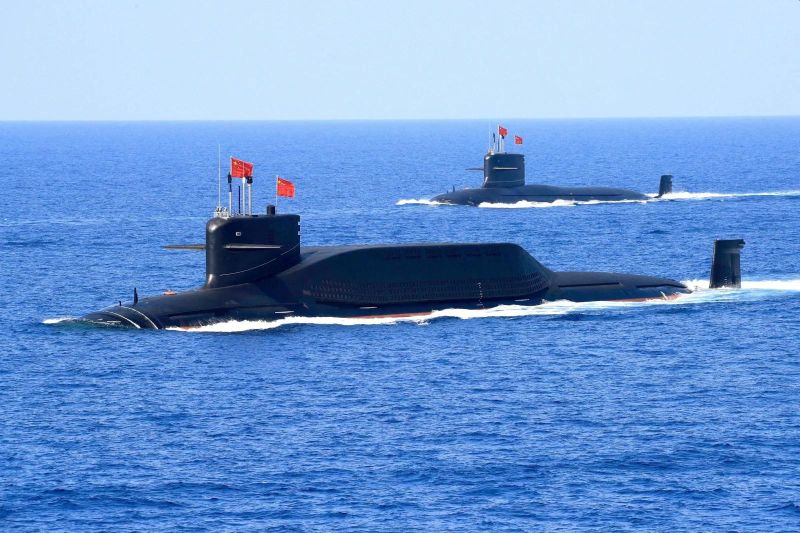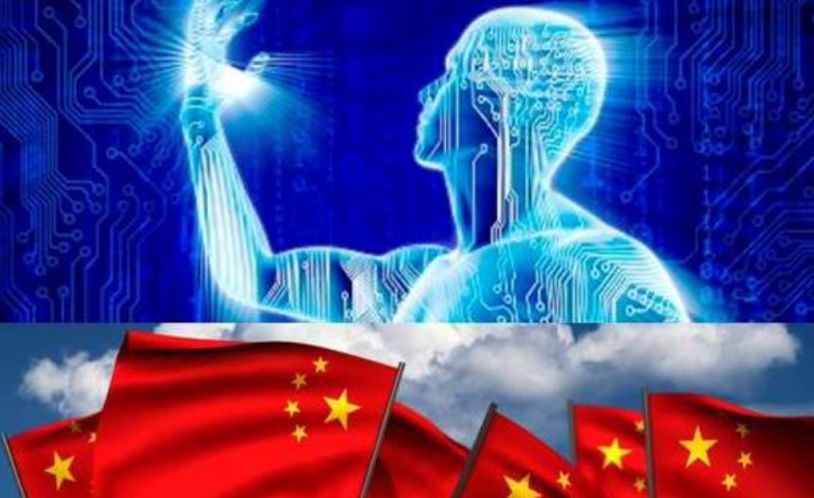By Eric Vandenbroeck and co-workers
The Case for Export-Control Diplomacy
In October 2022, the
United States imposed sweeping restrictions on the export of advanced chips and
chip-making equipment. The move, which followed steps taken in the first Trump
administration to curtail China’s access to cutting-edge semiconductors, jumpstarted
a comprehensive effort to cut China off from the world’s most powerful computer
processors—the inputs required to develop and run sophisticated artificial
intelligence systems that could be used to power autonomous weapons, conduct
mass cyberattacks, and augment intelligence collection.
Officials knew that
U.S. export controls could not succeed on their own. The semiconductor supply
chain is global, and countries such as Japan, the Netherlands, and South Korea produce
equipment, materials, and components that are key to chip production. Truly
hindering China’s progress would require persuading those countries to act in
concert with the United States. Officials in the first Trump administration
successfully pressured the Dutch to stop selling its most advanced chip-making
equipment to China. Building on this effort, the Biden administration began a
systematic diplomatic push to curtail China’s access to advanced technologies.
This approach has
obvious upsides. Other countries produce semiconductor technologies that would
greatly enhance China’s ability to manufacture advanced chips. The Dutch firm
ASML, for example, is the only company in the world currently able to build the
extreme-ultraviolet lithography machines needed to print intricate designs on
the most advanced chips. Plurilateral controls also prevent Chinese firms from
simply replacing U.S. equipment with, say, Dutch or Japanese alternatives. And
working with allies and partners fit with the Biden administration’s overall
preference for diplomacy over unilateralism.
The strategy achieved
notable successes: the Dutch and the Japanese announced their own semiconductor
export controls in 2023 and again early this year. But there were downsides,
too. Coordinating controls takes time and requires difficult compromises, and
in the meantime China was able to stockpile large
quantities of advanced chips and equipment.
It can be tempting to
jettison diplomacy in favor of a more aggressive, unilateral approach,
especially amid concerns about a shrinking U.S. lead in the AI competition with
China. That President Donald Trump’s second administration has generally
favored unilateral action makes such a move even more likely. But the United
States should be realistic about the benefits and the substantial risks of
going it alone. Expanding extraterritorial U.S. restrictions on selling
materials and equipment to China may help Washington maintain a technological
edge over Beijing in the short term. It may also help level the playing field
between U.S. technology firms and their foreign competitors. But the efficacy
of these actions is contingent on the United States’ technological superiority,
which may decline over time, and on its diplomatic leverage, which may well be
eroding. Working with foreign partners to restrict technology exports has made
a real dent in China’s capabilities. For the United States and its partners to
successfully limit Beijing’s access to advanced technologies, Washington must
find a way to keep some measure of diplomacy alive.

Off Limits
Export control
diplomacy is not easy. Foreign countries, including close U.S. partners, can be
reluctant to restrict their companies’ access to Chinese markets, alienate
Beijing, or craft novel regulations at the request of U.S. diplomats. At the
best of times, coordinating controls is a lengthy process, requiring consensus
on both the overall strategic approach and minute technical details. This makes
it harder for policymakers to adapt nimbly to technological advances and
provides China with lead time to stockpile key chips and equipment.
These concerns are
not just academic. Anticipating tighter restrictions, China quadrupled its
imports of Dutch lithography machines in 2023, before new controls went fully
into effect. In the first seven months of 2024, as the United States and
foreign partners considered whether and how to tighten controls, China imported
roughly $26 billion worth of chip-making equipment, a record amount. This was a
boon for firms such as ASML, Tokyo Electron, and the American company Applied
Materials, but a significant blow to the efficacy of U.S. export control
policy.
What is more, when it
comes to China, other countries tend to be more risk-averse than the United
States, especially because of Beijing’s willingness to retaliate in response to
semiconductor export controls—for example, by threatening to cut off Japan’s
access to minerals used in the production of Japanese automobiles.
In addition, other countries often wish to satisfy a higher evidentiary burden
before acting. The United States may thus be forced to choose between doing
more on its own—which disadvantages U.S. firms by denying them the kind of
access to Chinese markets afforded to foreign competitors—or “leveling down”
controls to whatever the most conservative country is willing to do. In
practice, this might mean blacklisting fewer Chinese chip-manufacturing facilities,
restricting a smaller subset of advanced equipment, or sidestepping whole
categories of controls.
In recent years, U.S.
policymakers, frustrated with the drawbacks to diplomacy but nonetheless
cognizant of the need to limit access to foreign-made semiconductor
technologies, have landed on a little-known export control authority called the
foreign direct product rule, which allows Washington to restrict the sale of
any product made with U.S. technology. The rule was first introduced in 1959,
and for decades was used sparingly. Starting in 2020, however, the U.S.
government began exercising it to more aggressively control
foreign-made items, including products destined for Russia, Belarus, and the
Chinese telecommunications firm Huawei, as well as chips and semiconductor
manufacturing equipment.
In December 2024, the
Department of Commerce dramatically expanded the applicability of the rule to
encompass foreign-made equipment that contains even one
chip manufactured with a U.S. tool—a criterion met by virtually all
advanced chip-making equipment in the world. Now the United States can
unilaterally impose extraterritorial controls on foreign-made chips and
equipment in order to block China from alternative
markets and promote a level playing field for U.S. firms, all while bypassing
lengthy and potentially unsuccessful attempts at diplomacy with third
countries. Notably, however, the 2024 rule exempted tools made in a list of countries
that participate in multilateral export control regimes and have the authority to
control semiconductor technology, among them Japan and the Netherlands. The
theory was that these countries could and would impose their equivalent
controls. Indeed, Japan and the Netherlands published complementary controls in
early 2025.

Helping Hands
Washington is now at
an inflection point on export controls. In cases where American companies are
the ones most directly regulated—for example, as part of restrictions on
U.S.-designed AI chips, including potential new controls on Nvidia’s
H20—unilateral action is a relatively simple proposition. But where foreign
sales are more directly impacted, such as in the case of restrictions on
semiconductor tools, the situation is more complex. Here, the new
administration must decide whether to go it alone or to recommit to diplomacy
and continue to exempt countries such as Japan and the Netherlands from
extraterritorial controls. Neither option is perfect, and both entail
significant tradeoffs.
Those who favor
expanded extraterritorial controls on close partners argue that they are the
only way to truly constrain China’s ability to produce advanced chips and
maintain a level playing field for U.S. firms. Even countries that have imposed
their export controls have not matched Washington’s comprehensive restrictions,
leaving U.S. firms at a distinct disadvantage. Japan and the Netherlands, for
example, have prohibited the export of certain listed tools but have not
imposed the kind of end-use, end-user, or person-based controls that Washington
has. This means that although there are no longer any U.S. items being sent to
advanced Chinese chip-manufacturing facilities, or any American workers there,
Dutch and Japanese firms can still send unlisted items to those factories,
including some key parts and components, and provide some upgrade and
maintenance services on the ground. Imposing extraterritorial controls could
close this gap.
In addition,
proponents of expanded extraterritorial restrictions argue that export control
diplomacy has been a failed experiment, costing the United States time and
effort as it cedes ground to China. Freed from the obligation to align and
coordinate export controls with foreign partners, the United States could
publish export control updates more regularly, keeping a better pace with
technological developments in China. It would also be easier for the United
States to pursue more aggressive controls, including blacklisting additional
Chinese manufacturing facilities or restricting more tools.
Yet, the failure of
plurilateral controls can be overstated. If one of their primary goals is to
degrade China’s ability to manufacture chips to develop and use advanced AI,
then the policy has had some real success. While U.S. companies have planned
massive data center buildouts for millions of U.S.-designed chips to create
increasingly powerful AI systems and deploy them at scale, China has struggled
to produce even a small fraction of U.S. output—and what it has made has cost
more and been of lower quality. China does not appear to have indigenously
manufactured any of Huawei’s AI chips, and even the Chinese AI firm DeepSeek, the country’s biggest AI success
story, has freely admitted that access to computing power is its greatest
constraint.
Expanded unilateral
extraterritorial controls, meanwhile, are not a panacea. For one thing, the
foreign direct product rule can extend Washington’s jurisdiction only to where
there is a U.S. technology hook—for example, the presence of a U.S. chip or a foreign
chip made with U.S. technology. It will be less effective where the U.S. input
is generic and, therefore, easily replaceable, as is the case for some
semiconductor materials and components. In the longer term, expanded use of the
rule could further incentivize foreign companies to reduce their reliance on
American parts throughout the semiconductor supply chain. Ultimately, this
could leave the United States with less leverage as AI becomes more important
and more powerful and make it harder for the United States to cut Beijing off
from advanced technologies in the event of a Chinese invasion of Taiwan.
Extraterritorial
controls can also be a diplomatic nightmare. Some countries could be persuaded
to accept U.S. jurisdiction to deflect blame from China, and where that is the
case, Washington can seek buy-in and move forward with restrictions. But many understandably
balk at the perceived loss of sovereignty that comes with U.S. control over
their firms. Countries such as Japan and the
Netherlands are also sensitive to U.S. actions that could harm companies that
play an outsize role in their economies and that they are wary of alienating.
And with an under-resourced enforcement team, the Department of Commerce cannot
truly compel foreign companies to comply, especially if their governments
direct them to ignore U.S. diktats.
The full diplomatic
costs of extraterritorial action are hard to predict. In addition to choosing
not to comply, countries could decide to retaliate, roll back existing
controls, or reduce cooperation with the United States on other issues,
including those outside the technology domain. Whether countries would risk
provoking Trump with an aggressive response is an open question—and likely
depends on how much leverage the United States has, both diplomatically and
technologically, and for how long.
What is clear,
however, is that this leverage is unlikely to last forever. In the long run,
foreign companies may find ways to reduce or eliminate their reliance on the
United States, which means that tools like the foreign direct product rule
could eventually lose their bite. The United States may therefore wish to
exhaust diplomatic options before resorting to unilateral action.
Unfortunately, if Trump goes through with even a fraction of the global tariffs
he announced in early April, it will likely decrease the administration’s
leverage to extract concessions on technology controls and could undermine
ongoing cooperation. In the wake of the announcement, for example, ASML’s
shares dropped to their lowest level in more than a year, a development that is
unlikely to make the company or the Dutch government sympathetic to calls for
further restrictions. The Trump administration’s more confrontational approach
to traditional allies, particularly those in Europe, will
undoubtedly color attempts at export control diplomacy, and some
European states may be reluctant to concede too much, given the risks of
domestic political blowback.

Still, it is worth
trying to find common ground, and sometimes, the United States will need to
make the first move to apply sufficient pressure on partners to “level up”
their controls. Allies, meanwhile, can lower the perceived costs of diplomacy
by signaling their willingness to work fast to close gaps in current controls.
The ideal terms of such an offer may change depending on the circumstances but
could include commitments to regularly blacklist Chinese manufacturing
facilities, restrict more tools, ban onsite maintenance activities, and share
intelligence on equipment locations and production capacity in China.
Even if Washington
ultimately decides to expand its use of the foreign direct product rule, there
will be long-term value in continuing to engage in some form of export control
diplomacy: doing the long, arduous, sometimes frustrating, but strategically rewarding
work of persuading countries that it is in the collective interest of the
United States and its allies to act together to maintain a technological lead
over China.
For updates click hompage here